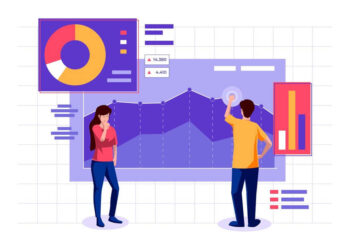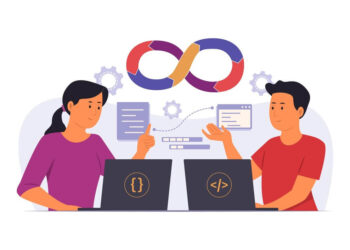Software development is just like any other project. You approach it blindly, and you end up on the losing side. Most developers believe in their prowess and will tackle any project with only one stage of the development lifecycle. However, they rarely benefit because they will spend more time rectifying mistakes along the way and restarting the process all over. Educate yourself and your team on the software development lifecycle stages to avoid these pitfalls. Below is a breakdown of each of these stages and how they cater to the bigger picture.
The Planning Stage of the Software Development Phases
Planning is the first of the software development phases. It is crucial to confirm that there are enough people to handle the project and sufficient funds to see it through. Even with the best idea in the world, you still need people and money to move forward. During planning, you must bring together your project team. Also include plans, procurement requirements, and cost estimations for each team member to understand the process better.
Analyzing and Defining Requirements
During feasibility analysis, your team must ensure that project requirements fulfill the end-user needs. This means communicating with stakeholders and looking into as much relevant data as possible. Also, consider the end users and how the suggested features will work. These outputs will vary depending on the methodology in use. These requirements ensure accessibility of UI and UX designs, front- and backend, API, and third-party services.
Design and Prototyping
The team will focus on application architecture and programming, covering and defining the application’s programming language. It can also include industry practices and problem-solving methods to perform specific tasks. The team will create user interfaces and choose platforms where the software will run based on defined application designs. The protection of this software will also be considered in terms of passwords and data.
Software Development/Implementation
At this stage, the developer’s work gets to speed up in the coding phase. All features discussed in the planning and design phase should now be changed into code and all components implemented. In projects that involve more than one developer, teamwork is emphasized. This phase will fix bugs and errors to deploy high-quality code. Detailed documentation works as a guide to better understand the aim and purpose of the applicants.
Software Testing
An IoT solutions company must conduct software testing before the product is released to the end user. It can also be done before coding the TDD (test-driven development). These tests are usually automatic, especially with an implemented CI/CD pipeline. Software testing ensures that all software features work to satisfaction. In the end, software testing ensures that the end solution meets edge cases and user needs.
Software Deployment
Initially, deployment is challenging for a new software product. However, if software testing delivers positive results, the application will make it to the market and be available to the end-users. During deployment, it is essential to improve scenarios depending on real-world situations. While the entire process is automatic, you and your teams should be vigilant in pointing out the complexities. This process involves multiple systems and devices that should be integrated successfully through a long process.
Operation and Maintenance
The Maintenance stage is one of the crucial processes in the software development phases. Maintenance is based on the user’s feedback after exploring the product in a real environment. As a result, you can improve your products using new features and eliminate bugs and possible vulnerabilities. In addition, developers quickly identifying and resolving problems is a sign that the phase is working efficiently.
Basic Software Development Lifecycle Models
Waterfall Model
The waterfall model is the oldest method and is very linear and straightforward. It requires development teams to finish a single project phase before moving to another. Each stage has its plan and uses information from the previous stage to avoid problems.
Iterative Model
The iterative model is based on reiteration and repeat testing. You produce new versions of a software project after every phase to identify potential errors and allow developers to improve the end product.
Spiral Model
Spiral models are flexible for software development phases because projects repeatedly go through four main phases in a spiral motion. Therefore, it is used for large projects where development teams can build customized products and use any received feedback early in the life cycle.
V-Model
The V-model focuses on verification and validation and works like the waterfall model. The testing phase is incorporated into the development stages to identify potential defects and bugs. It focuses on shortcomings of other models by preventing notorious bugs from going overboard, meaning it is time intensive.
Agile Model
The agile model is mostly used in the software development industry. It prioritized fast and continuous release cycles using small and incremental changes between releases. This model results in more iterations and multiple tests than other models. This model helps teams address minor issues while they arise instead of missing them until later in the complex stages.
In the long run, any development team in the IT industry can benefit from using a development lifecycle in their projects. Mastering each level of the SLDC requires dedication and constant learning. With these factors, you can consider the factors discussed above to find one that benefits you the most. For these phases to achieve results, communication is crucial among teams.
Keep learning and Reading blogs on Pinay Kantutan.





